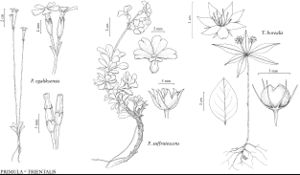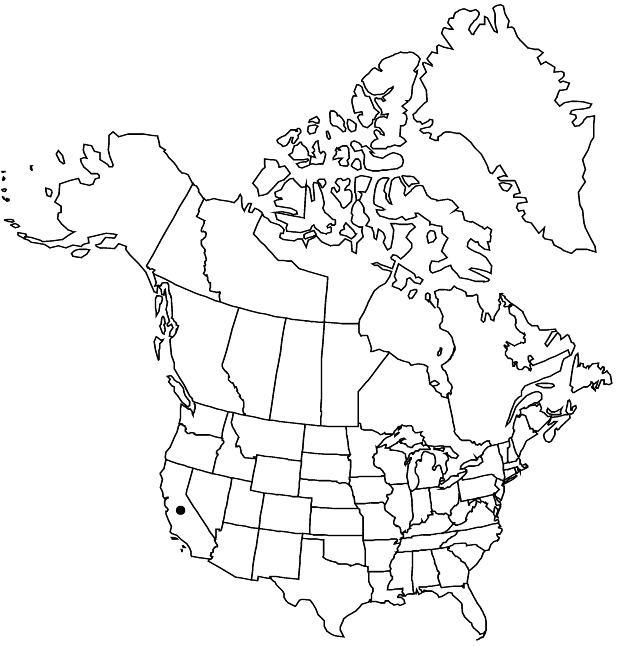Primula suffrutescens
Proc. Amer. Acad. Arts 7: 371. 1868 ,.
Plants evergreen, semiwoody, (mat-forming, leaves densely marcescent along stem base), 5–15 cm; rhizomes stout, long; rosettes multiple, forming mats, in apical clusters arising off stems; vegetative parts efarinose but often glandular. Leaves not aromatic, indistinctly petiolate; petiole winged; blade without deep reticulate veins abaxially, cuneate-spatulate, 4 × 0.5–1 cm, succulent, margins crenate to dentate with 6–8 teeth, apex obtuse, surfaces glabrous. Inflorescences 2–9-flowered; involucral bracts plane at base, unequal. Pedicels erect, thin, 4–12 mm, length 2–4 times bracts, stiff. Flowers heterostylous; calyx green, urceolate, 4–8 mm; corolla rose-pink, tube 6–10 mm, length 2 times calyx, glandular, limb 10–20 mm diam., lobes 5–10 mm, apex emarginate. Capsules globose, length 0.7–0.8 times calyx. Seeds with flanged edges, reticulate. 2n = 44.
Phenology: Flowering summer.
Habitat: Rocky alpine slopes in weathered granite soils and rock fissures
Elevation: 3300+ m
Discussion
Primula suffrutescens is unusual in the genus, and unique among North American representatives, in forming mats with semiwoody stems carrying withered remains of old leaves on the lower portions of the stems, and evergreen leaf clusters on the distal portions.
Selected References
None.

